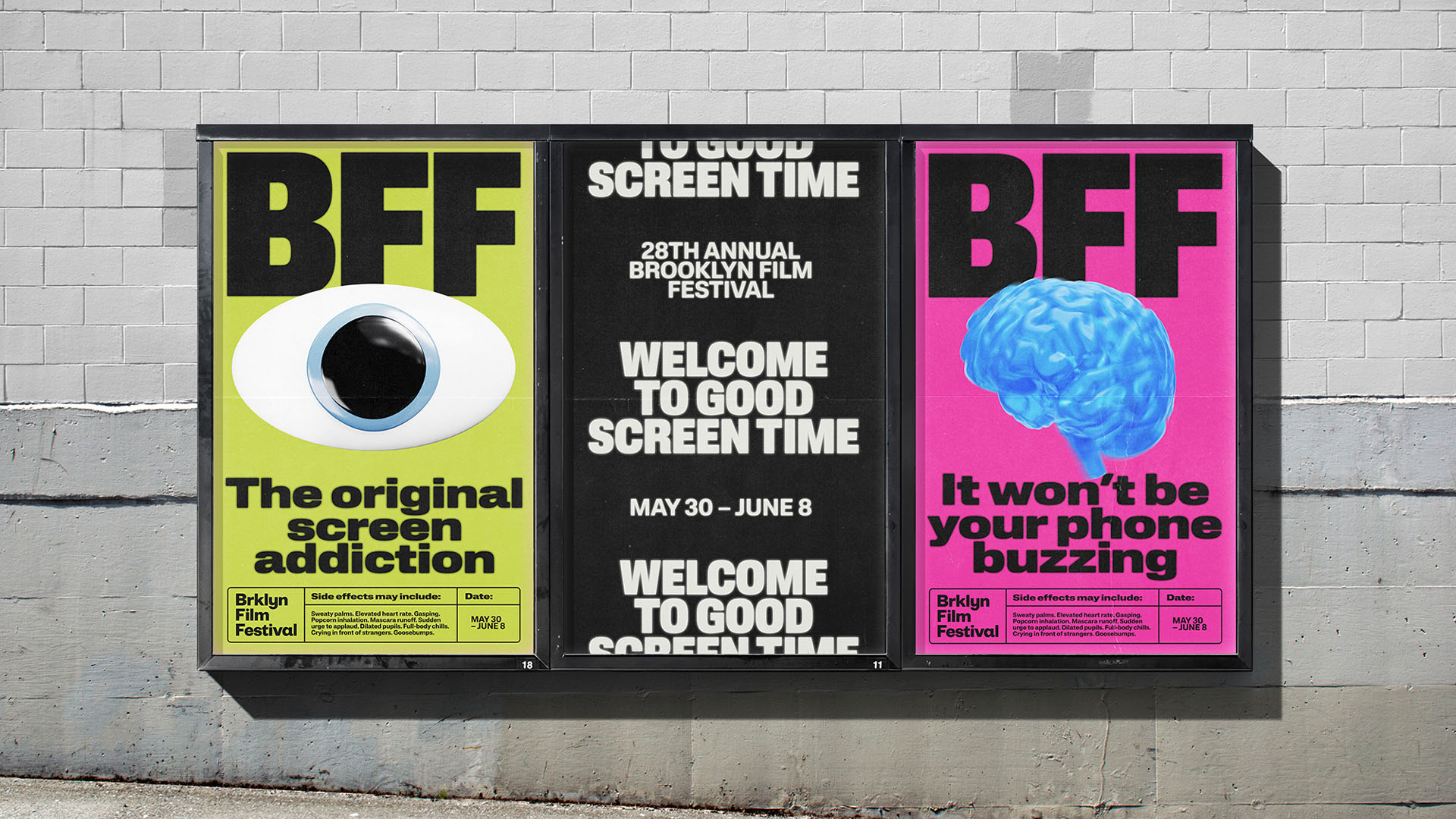How to paint in color
Move from monochrome to color with these five must-know steps.
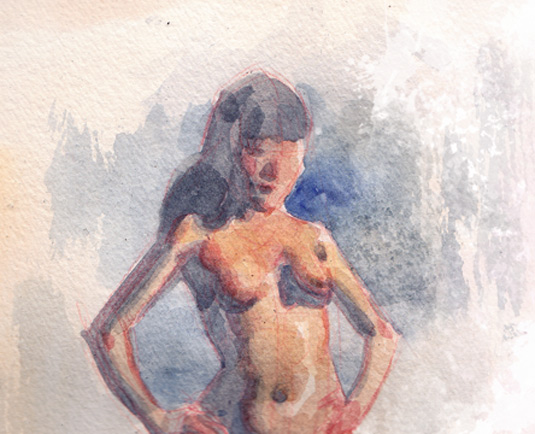
So you've learnt how to draw and paint in black and white and now you'd like to move into the world of color. Before you do, there are a few techniques to consider.
Color separates painting from drawing, bringing life and vibrancy to paintings and sketches. Yet because color is so complex, I prefer to simplify color and limit the colors I use as much as possible. To do this I must first properly shift a color's temperature using a few key painting techniques.
Temperature is a property of color that's often misunderstood. It refers to how warm or cool a color is. I define warm colors as red, yellow and orange. Cool colors are blue, green and violet.
Temperature is relative, so any color has a warm and cool version. One way to apply this to figure painting is by starting with only two colors, using burnt umber as my warm and ultramarine blue as the cool.
These two colors enable me to create a range of warm and cool greys of varying value and intensity. Once I've completed the first pass of color, I'll then add variations and temperature shifts.
Variation and temperature shifts are the secret to making color feel, quite simply, believable. For example, I'll add a wash of yellow to the light side of the skin to enhance the color.
Next, I'll begin to carefully add reds and pinks to the blood-rich and sun-tanned areas such as the hands, face, knees and feet. Finally, I'll add more subtle cool colors like blue and green to the half-tones: this helps to make the skin look that bit more alive and realistic-looking. Hopefully the following painting techniques will help you to achieve great results.
Get the Creative Bloq Newsletter
Daily design news, reviews, how-tos and more, as picked by the editors.
01. Understanding temperature
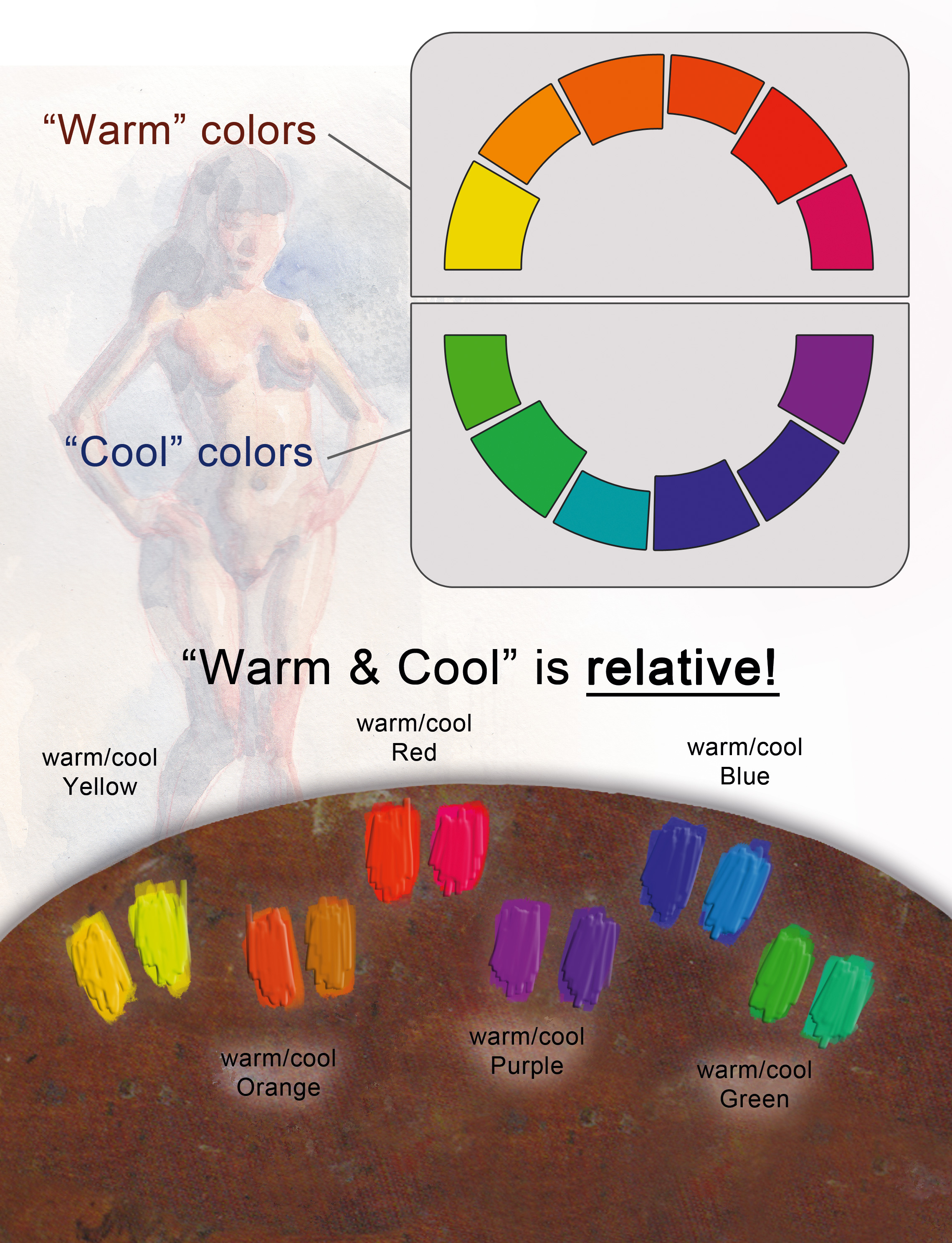
Temperature is relative, so any color can have a warm or cool version depending on the colors around it. Even warm colors such as red, yellow and orange can look cool, and likewise blue, green and violet can be made warm by using them in conjunction with other colors.
02. Block in shadow
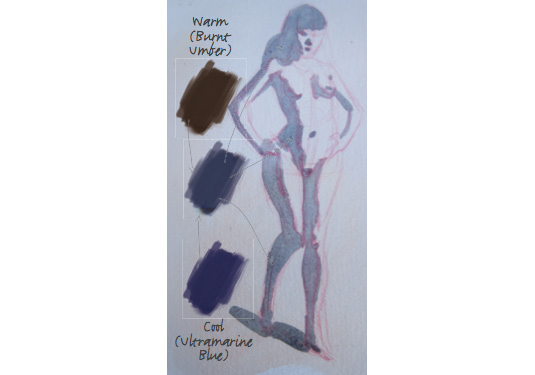
Once the drawing is established, the next painting technique is to block in the shadow. For the color of the shadow, I mix Ultramarine Blue and Burnt Umber to create a medium dark value, blue-grey. Because most art studio lights have a warm color, the cool shadow creates dynamic color contrast.
03. Transition tones
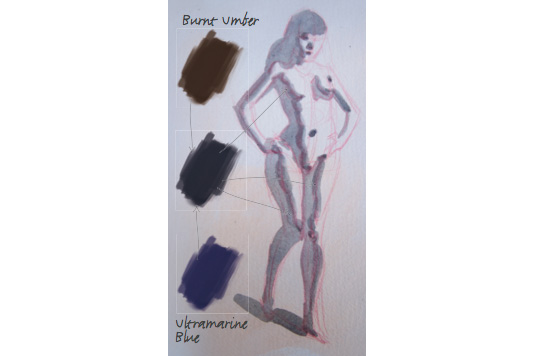
I put a wash of dark, blue-grey on the border of the shadow shape. This softens the edge and creates a transition of value from dark to light. To mix the darker tone, I use Burnt Umber and Ultramarine Blue again, but with more pigment and less water.
04. Half-tones and lights
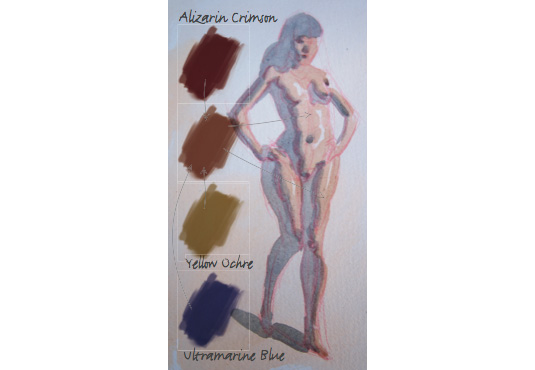
To create a base flesh-tone, I use a mixture of Alizarin Crimson, Yellow Ochre and Ultramarine Blue. I add more yellow to the light-facing planes, which results in a more life-like colour. For the half-tones, I add more red and blue for greater colour saturation and a darker value.
05. Variations and accents
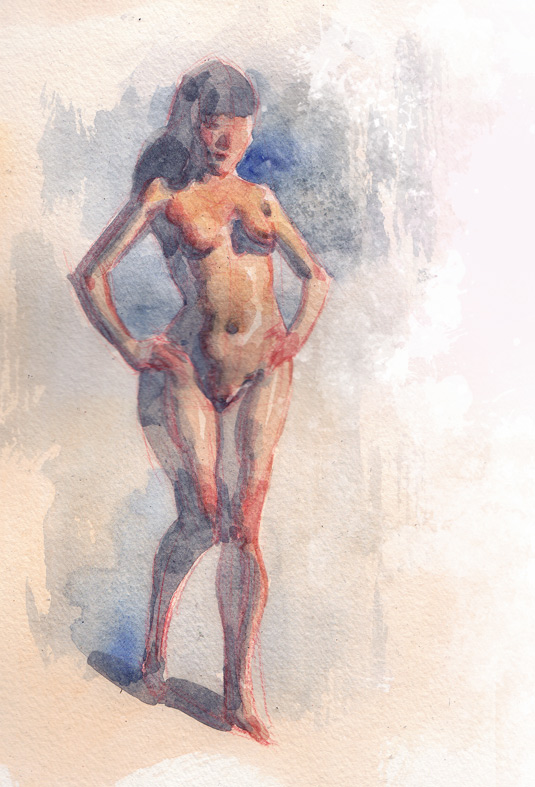
More than any other painting technique, variation is the key to believable color. So to finish the sketch, I add a pink/orange mix to the face, hands and joints, then a more saturated warm-yellow mix to the light areas. Finally, I apply a cool-grey mix to the half-tones, which makes the skin more dynamic and life-like.
This article originally appeared in ImagineFX bookazine How to Paint & Draw.
Related articles:
- How to choose which paint brush to use
- How to draw a bear
- Browse through our how to draw collection
- How to improve your character drawing
- How to draw manga

Thank you for reading 5 articles this month* Join now for unlimited access
Enjoy your first month for just £1 / $1 / €1
*Read 5 free articles per month without a subscription

Join now for unlimited access
Try first month for just £1 / $1 / €1

Chris is obsessed with figure drawing and painting. He loves sharing great information on art, picture-making and topics like which paint brush to use.
